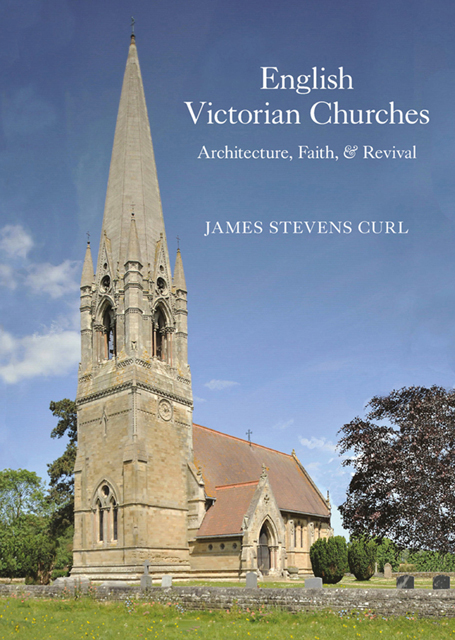Book contents
- Frontmatter
- Dedication
- Contents
- Foreword by Barry Orford
- Preface and Acknowledgements
- Note on Illustrations
- 1 An Introduction to Denominations and Victorian Churches
- 2 Architecture, Antiquarianism, and Styles
- 3 The Religious Atmosphere in the 1830s and 1840s
- 4 Recusants, Goths, Converts, Ultramontanes, and Controversies
- 5 The Anglican Revival
- 6 The Search for an Ideal
- 7 Church Architecture of the 1850s, 1860s, and Early 1870s
- 8 The Late Victorian Anglican Church in Several Manifestations
- 9 Non-Anglican Buildings for Religious Observance
- 10 Epilogue
- Select Glossary
- Select Bibliography
- Index
1 - An Introduction to Denominations and Victorian Churches
Published online by Cambridge University Press: 08 June 2023
- Frontmatter
- Dedication
- Contents
- Foreword by Barry Orford
- Preface and Acknowledgements
- Note on Illustrations
- 1 An Introduction to Denominations and Victorian Churches
- 2 Architecture, Antiquarianism, and Styles
- 3 The Religious Atmosphere in the 1830s and 1840s
- 4 Recusants, Goths, Converts, Ultramontanes, and Controversies
- 5 The Anglican Revival
- 6 The Search for an Ideal
- 7 Church Architecture of the 1850s, 1860s, and Early 1870s
- 8 The Late Victorian Anglican Church in Several Manifestations
- 9 Non-Anglican Buildings for Religious Observance
- 10 Epilogue
- Select Glossary
- Select Bibliography
- Index
Summary
‘What is a church?’ – Our honest sexton tells,
‘’Tis a tall building, with a tower and bells.’George Crabbe (1754–1832): The Borough (1810), Letter 2, ‘The Church’, line 11.For commonly, wheresoever God buildeth a church, the devil will build a chapel just by.
Thomas Becon (1512–67) edited by John Ayre (1801–69): The Catechism of Thomas Becon, STP, Chaplain to Archbishop Cranmer, … etc.(Cambridge: Cambridge University Press for The Parker Society, 1844), 361.Preliminary Remarks
It is as well to remind ourselves what is meant by the Victorian Age. It began when Princess Alexandrina Victoria of Kent (b. 24 May 1819) succeeded to the throne on the death of William IV on 20 June 1837: it was to end on 22 January 1901. Her reign is often perceived as the period when the Industrial Revolution, the railways, urban slums, and much else came into being; yet the Industrial Revolution began some 80 years before 1837, and the first railways were operational in the reigns of her uncles, George IV (1820–30) and William IV (1830–7).
The most spectacular changes to Victorian England involved urbanisation: it was the first truly urbanised modern society, and by 1890 London was a major world metropolis. The 1901 Census showed that more than three-quarters of the population lived in urban areas: towns became magnets for rural labourers, offering opportunities for personal advancement unthinkable in the countryside, and in the course of the Queen’s reign there was a shift from high to low birth and death rates in urban areas. Gross National Product dramatically increased; income per head more than doubled between 1850 and 1900; and the Victorian legacy was one of unparalleled achievement and unimaginable wealth creation by the standards of a century before. Even more remarkable was the civilising of the urban masses through education, sanitary reform, housing provision, and the stabilisation of society. Urban Man became literate and numerate; for the most part was far better housed than was the case in 1801; was less inclined to riot as part of a gin-soaked mob; and paid greater attention to hygiene, in the process becoming, as it were, potty-trained.
- Type
- Chapter
- Information
- English Victorian ChurchesArchitecture, Faith, and Revival, pp. 1 - 10Publisher: Boydell & BrewerPrint publication year: 2022



